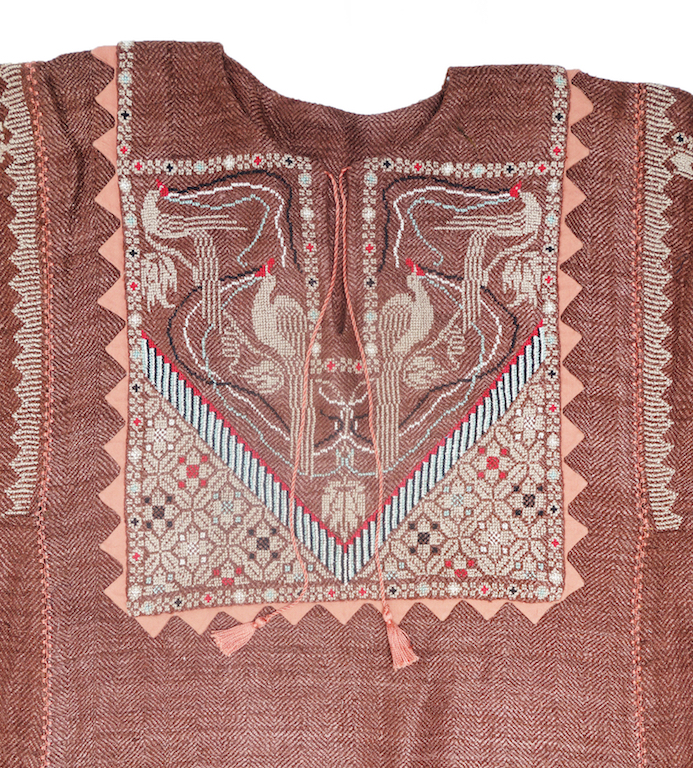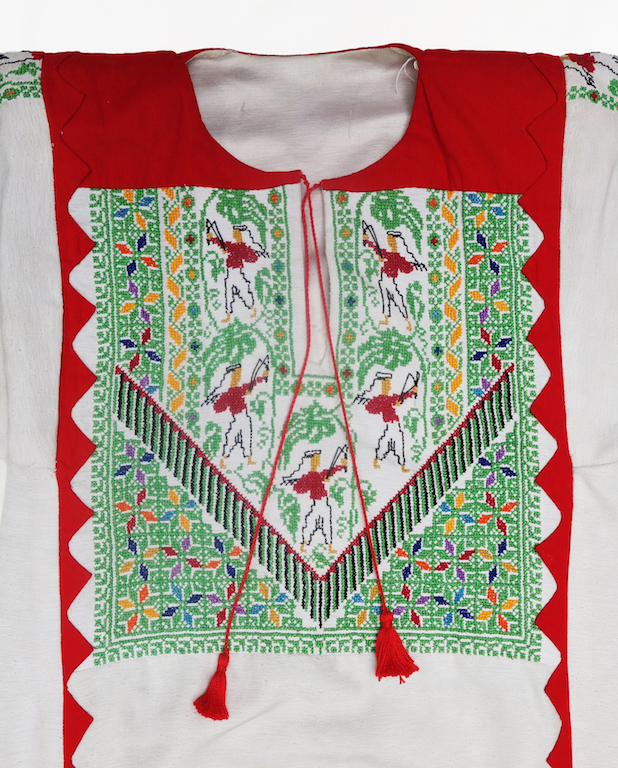
In it, Ghnaim tells her own history as a Palestinian-American, formed largely by learning to embroider from her mother, beginning when she was two years old. It is a fascinating guidebook to the history and meaning behind dozens of traditional, primarily cross stitched patterns, accompanied by full colour photographs of thobes (women’s dresses) and over twenty pattern charts. And yes, there are recipes for different spiced teas and for quince preserves.
The TRC has a beautiful collection of over one hundred Palestinian textiles and accessories. It ranges from shawls, caps, and jackets to face veils and a kohl bag, and includes spindles and thread personally collected in the 1920s by the pioneering textile archaeologist Grace Crowfoot. There are over two dozen thobes (the long dress with sleeves traditionally worn by women) in the collection. The oldest thobe dates to the 1920s and comes from Hebron.

My favourite thobe (TRC 2005.0143) comes from Bethlehem. It’s made from atelier woven linen from the Bethlehem and Medjel region. There’s European cloth in the yoke, while the silk embroidery threads come from Syria. Stripes of yellow, green and purple have been sewn on the black linen. It has very wide, pointed sleeves. The floral pattern on the chest panel is hand embroidered using satin stitch and couching. It must have taken months to create. I’m sure the woman who wore it felt stunning.

The designs and colours in modern thobes can still speak a certain language today. The TRC collection includes several so-called ‘flag’ dresses, which gained popularity during the first Intifada of 1987. These are dresses of political protest which proclaim a Palestinian identity through design or colours.
For example, TRC 2003.0005a is a white dress decorated with hand embroidered mosques, texts in Arabic and boys with slings firing stones. TRC 2003.0004a (late 20th century, Syria) is decorated with hand embroidered motifs of phoenixes holding ribbons in red, black, white and green, the colours of the Palestinian flag.

You can learn more about Palestinian embroidery, and about the dress of some of the groups living in the Middle East, by visiting the TRC’s on-line exhibition “From Kaftan to Kippa”. For Wafa Ghnaim’s book and her on-line embroidery classes, see www.tatreezandtea.com
Finally, the TRC organises two workshops about Palestinian embroidery, namely on Friday, 22 October, and on Friday 12 November. The workshops are given by Fatima Abbadi.
Shelley Anderson, 5 July 2021










